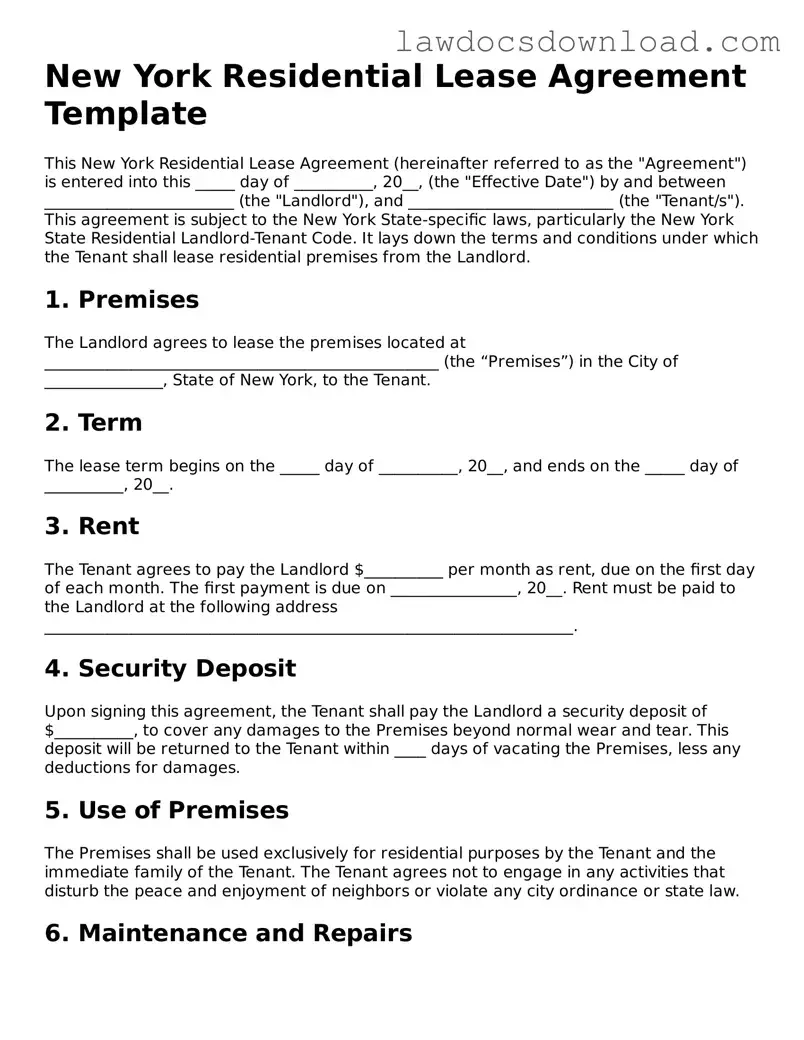New York Residential Lease Agreement Template
This New York Residential Lease Agreement (hereinafter referred to as the "Agreement") is entered into this _____ day of __________, 20__, (the "Effective Date") by and between ________________________ (the "Landlord"), and __________________________ (the "Tenant/s"). This agreement is subject to the New York State-specific laws, particularly the New York State Residential Landlord-Tenant Code. It lays down the terms and conditions under which the Tenant shall lease residential premises from the Landlord.
1. Premises
The Landlord agrees to lease the premises located at __________________________________________________ (the “Premises”) in the City of _______________, State of New York, to the Tenant.
2. Term
The lease term begins on the _____ day of __________, 20__, and ends on the _____ day of __________, 20__.
3. Rent
The Tenant agrees to pay the Landlord $__________ per month as rent, due on the first day of each month. The first payment is due on ________________, 20__. Rent must be paid to the Landlord at the following address ___________________________________________________________________.
4. Security Deposit
Upon signing this agreement, the Tenant shall pay the Landlord a security deposit of $__________, to cover any damages to the Premises beyond normal wear and tear. This deposit will be returned to the Tenant within ____ days of vacating the Premises, less any deductions for damages.
5. Use of Premises
The Premises shall be used exclusively for residential purposes by the Tenant and the immediate family of the Tenant. The Tenant agrees not to engage in any activities that disturb the peace and enjoyment of neighbors or violate any city ordinance or state law.
6. Maintenance and Repairs
The Tenant agrees to keep the rented premises in a clean and habitable condition and to promptly report any damages, defects, or the need for repairs to the Landlord. The Landlord is responsible for maintaining the property in a condition fit for habitation, as required by New York State law.
7. Alterations
The Tenant shall not make any alterations, additions, or improvements to the Premises without the prior written consent of the Landlord.
8. Governing Law
This Agreement shall be governed by, construed, and enforced in accordance with the laws of the State of New York.
9. Signatures
This Agreement, entered into at __________________ (City), New York, indicates the understanding agreed upon by both the Tenant and the Landlord. Both parties hereby bind themselves to this lease agreement:
- Landlord's Signature: ___________________________ Date: _______________
- Tenant's Signature: _____________________________ Date: _______________
By signing this New York Residential Lease Agreement, both parties agree to abide by all the terms and conditions outlined in this document. Any modifications to this agreement must be made in writing and signed by both parties.
